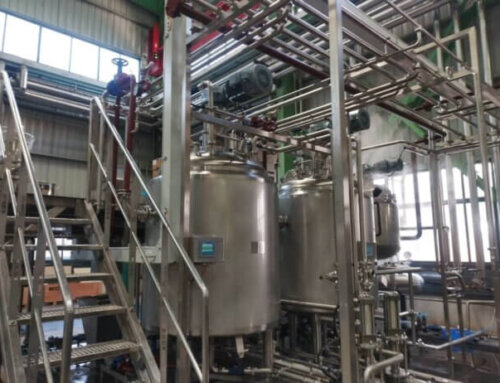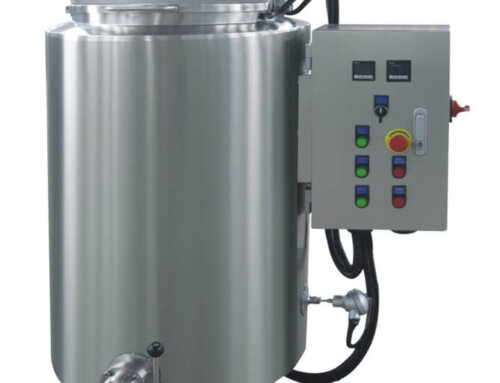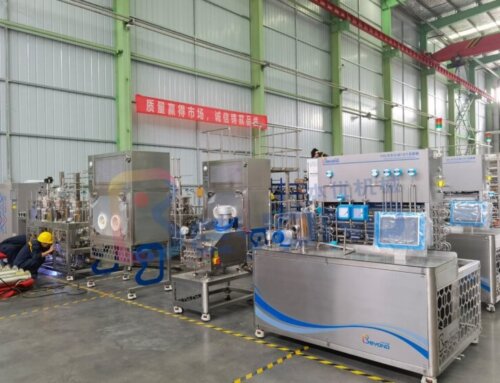Enzyme Preparations Functions in Fruit Juice and Wine Processing
The use of technical enzymes has been an essential part of the entire technology of fruit juice production from the beginning. In the early 1930s, the first steps were made to process fruits into juices that could be stored for a longer time without the danger of alcoholic fermentation or other forms of undesired spoilage.
The colloidal system in fruit and vegetable juice is mainly formed by pectin, starch, protein and other macromolecules. Adding pectinase and amylase to decompose macromolecule pectin and starch, destroying the stable system formed by pectin and starch in fruit and vegetable juice. Suspended matter precipitates with the destruction of the stable system, so that the fruit and vegetable juice can be clarified. Complex enzymes are often used in production. This enzyme has a variety of active enzymes such as pectinase, amylase and protease.
The purposes of using enzymes in fruit juice or wine are:
(1) to increase extraction of juice from raw material.
(2) to increase processing efficiency such as pressing and solids settling or removal.
(3) to render the final product sparkling clear and attractive.
Fruit juices were and still are considered to be an excellent alternative to alcoholic beverages like beer or wine. Starch-degrading enzymes for fruit juice clarification and, later, pectolytic enzymes represented the first enzymatic products that were successfully used in fruit juice production. New processing technologies have been made feasible by new enzyme preparations. For example, yields of juice from apples have been pushed higher and higher, making modern fruit processing more efficient and economical. Typical of the enzyme activity of commercial fruit juice processing enzymes is their dependence on reaction conditions like pH and temperature. Most of them show their highest activity at a pH range of 3.5 to 4.5. In the juice production line,
There are two possibilities for using enzymes in clear juice processing: mash treatment and juice clarification. In the mash treatment stages of juice production, the objective is to obtain as much juice as possible from the fruit mash. Pectolytic enzymes help considerably at this stage. At the clarification stage, pectolytic enzymes help to clarify juice and make juice filtration much easier. In the citrus industry, on the other hand, special pectolytic enzymes are used in the pulp wash process and to reduce viscosity in order to avoid gel formation of pectin during concentration and to recover citrus oil.

Types Of Enzyme Preparations In Fruit Processing
Based on our current knowledge of the pectin molecule, the following enzymes may be necessary to achieve total hydrolysis of pectin:
- Pectin Lyase
- Pectin methyl esterase
- Polygalacturonase
- Arabinanase
- Rhamnogalacturonase
- Rhamnananase
- Galactanase
- Other Glycanses
In principle, commercial enzyme preparations for juice processing should be formulated in such a way that they cover necessary enzyme activities to achieve a high grade of hydrolysis of the targeted fruit or vegetable pectin.
Typical Application Scenarios of Enzyme Treatment
Enzyme treatment in juice clarification
When we produce clear juice from fresh fruits, the fruits like apple, pineapple, banana, berry fruit with high pectin and starch need to do enzyme treatment. The enzyme treatment is a process by adding enzyme preparations to the juice, using the enzyme preparation and the pectin and starch in the juice to chemically react, degrading insoluble pectinase and amylase, separating the solids in the juice and reducing the juice viscosity. Here we take the example of the apple juice clarification process:
Apple juices that are running off the press are always cloudy due to the presence of a wide range of natural colloidal polysaccharides, cellulosic fragments from skin and pulp, and other small particles like protein fragments or polyphenols and tannins with protein. The polysac-charides are part of the intercellular cement or pectin, which holds together the plant tissue, whereas proteins, polyphenols, and other compounds are constituents of the plant material. During the crushing of the fruit and the juice extracting process, these constituents enter the juice in solubilized and unsolubilized colloidal form. The most important of these high molecular substances is pectin, which is responsible for a series of technical problems encountered during processing. As a cloud stabilizer, it prevents the clarification of juices, which leads to increased viscosity and gelling and thus can be easily scorched to burn the juice in the evaporator. Pectin can also be complex with calcium to form hazes and precipitates in later processing steps. Pectolytic enzymes are used in order to facilitate the clarification process. Through enzymatic depectinization, the juice can be clarified and filtered easily.
Starch can often be found in apple juices. It is normally present in ripe fruit in the form of microscopically small, insoluble granules. When the juice is heated, for example, for aroma recovery or during pasteurization, the starch becomes hydrated and gelatinized. However, after filtration of the juice, the starch once again becomes insoluble as it retrogrades and precipitates. This causes an unattractive post-bottling clouding of the juice or concentrate. Complete enzymatic degradation of the starch by means of special amylases is only possible if the juice was previously heated to at least 85℃. The heat treatment hydrates and gelatinizes the starch and makes it ready for enzymatic degradation. In this process, enzyme treatment and subsequent fining are carried out in the juice coming from the aroma recovery where the juice has been heated up briefly in order to remove the aroma and to solubilize the starch.

Enzyme treatment in fruit mash clarification
Whereas enzymes for clarification were part of apple juice production right from the beginning, the use of enzymes for apple mash treatment is fairly recent. There are two main reasons for using pectinases for mash treatment: higher juice yields and an increase of the press capacity and efficiency. Many stored apples are processed, particularly in the late part of the processing season. The quality of this raw material for juice production is not as good as that of fresh fruit. The longer the storage period, the greater is the change in the composition of the apple tissue: pectin is converted from its insoluble form into soluble pectin. The latter leads to increased mash viscosity and prevents the flow of the juice. The whole pressing process takes much longer. Measures to increase the juice yield are often indispensable to producing juice with profit. Enzy-matic hydrolysis of the soluble pectin by means of a special mash enzyme removes these drawbacks and provides a better yield. The quantity of juice can be increased significantly. By using a special apple mash enzyme, large quantities of raw material can be processed with ease. The whole pressing capacity, expressed by hourly throughput, is stepped up considerably. The use of a mashing enzyme to increase the throughput could help avoid the need to purchase additional expensive belt presses. Due to the high investment costs for juice presses, the increase of the press capacity is a very strong argument for using mash enzymes.
The enzyme is usually added as a 1 to 2% dilution into the mill. Optimal distribution is essential for a good effect of the mash enzyme. Extraction of the pomace with water after the first pressing can further increase the total yield. The addition of mash enzyme in this extraction process, together with warm water, is necessary to wash out residual sugar that can still be found in the pomace after one press run. This water extract can be processed only into clear apple juice concentrate. By combining pressing and extraction processes in the production of apple juice concentrate with the help of enzymes, yields of more than 90% as measured by total Brix are realistic. Furthermore, enzymatic mash treatment facilitates cleaning of the presses. Especially when stored apples have been pressed, a lot of residue remains in the pomace, making it sticky and difficult to remove. Much time has to be used cleaning the presses, which results in a decrease in the total processing capacity.





